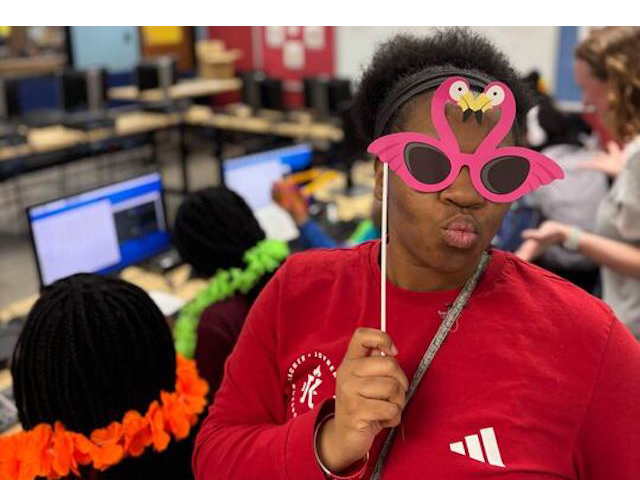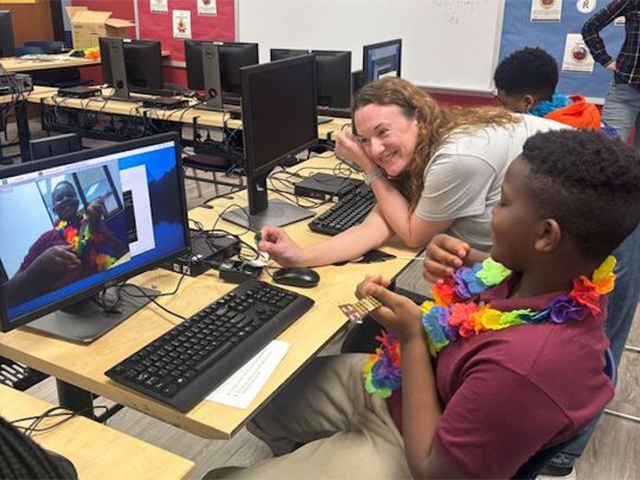JJK FAN Students Dig into Plant Science with the Baxter Lab
Earlier this year, 50 students from the Jackie Joyner-Kersee Food, Agriculture, and Nutrition Innovation Center (JJK FAN) got to trade their usual schoolwork for microscopes and handfuls of soil thanks to a six-week program led by our Baxter Lab. The program, called Baxter Lab’s Atomic Numbers, provided the fifth-through-eighth grade students the chance to practice real, hands-on science.
Offered annually and growing each year, this immersive experience is part of a broader initiative to introduce students to cutting-edge science and technology through direct engagement with working plant scientists. Over the course of 11 interactive lessons, students explored real research topics using high-tech tools, and quite literally dug in to the science of plants.
With guidance from Danforth Center researchers, students got a taste of what plant scientists do day to day. They explored topics like plant imaging, genetics, and root systems using scientific research tools and techniques.
One of the most popular activities involved using Raspberry Pi computers and learning how to write basic code to control camera modules and program their own “smart selfies.” They wrote the code that triggered the camera, named the file, and told the computer where to save it. This activity helped them see how code interacts with hardware. After writing and running their coded scripts, they had fun posing for their customized photos with props. By the end of the lesson, they had a newfound appreciation for cell phone selfies!

A student gets ready to pose for a selfie after writing code to program the camera.
A lesson on root biology was also a popular activity. The students gathered around a large soil sample and listened as Baxter Lab Research Technician Britney Millman described different types of roots, their structures, and how they function. When invited to explore the roots and soil themselves, the students eagerly dug in and got their hands dirty. One student enthusiastically declared that “if this is what scientists do all day, I think I want to become a scientist!”
Real Science, Real Potential
That sense of curiosity and excitement is exactly what the program was designed to inspire in the students. What makes the program so special is the access it provides—both to real scientists and to real technology. Rather than just studying worksheets, these students were mentored by working scientists. They asked questions, got honest answers, and engaged in the human side of STEM careers. That kind of face-to-face interaction helps demystify science and lets students imagine themselves as scientists.
The hands-on coding project introduced students to coding, camera technology, and image processing—skills that are used in cutting-edge science, including right here at the Danforth Center. Our researchers use high-throughput imaging systems and coded scripts to monitor traits like plant growth, stress response, and root structure over time. From automated cameras to drone-based field imaging, this kind of technology is transforming plant science, and thanks to the Baxter Lab’s Atomic Numbers program, JJK students now have a first glimpse into that future.

Baxter Lab Scientist Jennifer Barrett teaches a student about Raspberry Pi programming.
This partnership with the Baxter Lab is one piece of a larger ecosystem of STEM learning at JJK FAN. Between January and May 2025, the center hosted 260 interactive agtech, food, and nutrition classes, serving 856 K–12 students. Impressively, 87% of those students participated in series-based lessons, which promote deeper and more sustained learning.
When students are empowered to explore, experiment, and see themselves in science, their potential starts to grow. Whether they’re marveling at root systems or coding a selfie, each experience plants a seed of possibility.